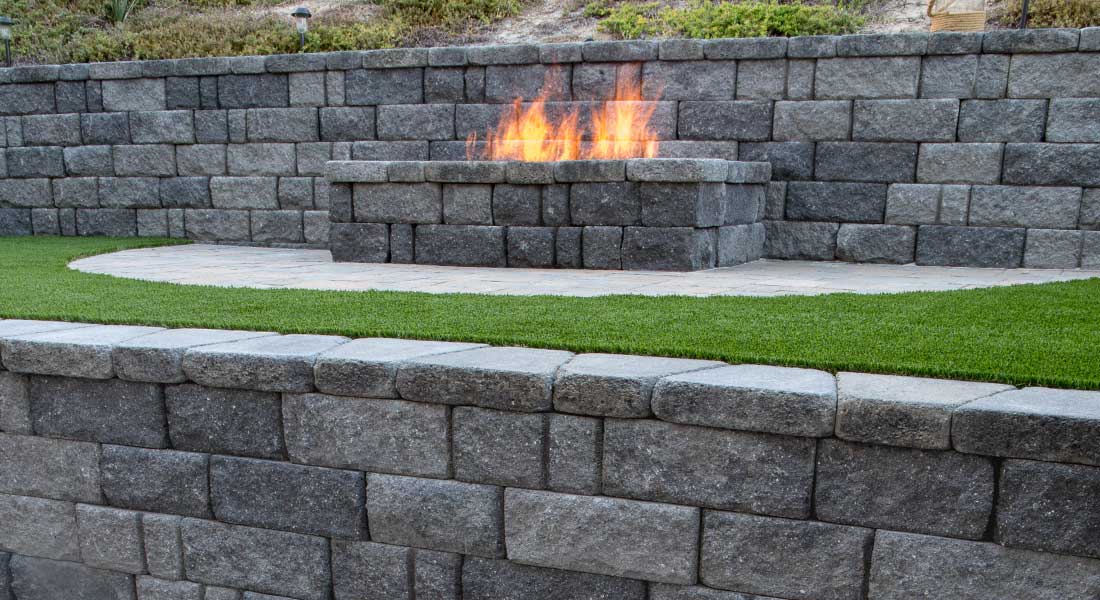Wall blocks that retain their utilitarian roots, and become the masters of orchestrating the canvas of outdoor space. Seamlessly merging functionality and aesthetics, these versatile elements have become essential elements in modern landscape design. This article explores walls for retaining as well as their numerous benefits in demonstrating the ways they can be used to improve outdoor spaces.

The retaining wall block is a radical departure from traditional hardscape elements. It comes in a wide range of colors, sizes and shapes. This enables property owners to express unique aesthetic visions. If they are made of the raw elegance of natural stone or the hefty sway of concrete, these pieces unlock a realm of possibilities for design. Landscape architects and designers see that they are a crucial tool to sculpt cohesive and captivating outdoor spaces that reflect the individuality of the surroundings.
Under the Surface Allure, Guardians of Stability
Beyond their visual allure, retaining wall blocks unfold a plethora of functional benefits. As custodians of the landscape the retaining wall blocks guard it from erosion. These blocks give stability to sloped or uneven terrains. They transform unbalanced landscapes into levels that can be used for relaxing outdoor living and flourishing gardens.
Retaining walls are an economical and smart option for homeowners who want to make their gardens more attractive. They’re a great value due to their simple installation and minimal maintenance. These blocks do more than provide visually stunning retaining walls but endure the elements, ensuring long-lasting security without losing aesthetic appeal.
Versatile Sculptors: Defining Outdoor Living Areas
Blocks for retaining walls are no longer functional wall blocks. They’ve evolved into sculptures which define outdoor living spaces. Through the integration of strategically placed blocks the blocks, homeowners are able to create distinct zones for a variety of things like al fresco eating, relaxation or gardening. These blocks are not only functional, but also serve as decorative elements. They can be used to create privacy barriers or highlight specific landscape features such as sculpture gardens or water features.
They are stacked efficiently and can support up to three courses in height. Geogrid reinforcement is needed for the purpose of strengthening the soil underneath them. They can support up to 3 levels of height. As walls ascend in height, larger configurations become necessary for enhanced stability and durability. With precision-designed interlocking systems blocks, they provide an extremely solid foundation for landscaping projects. Geo-grid reinforcement provides durability and strength as well as strengthening the walls against the strains created by the soil.
Choose the Right Block to Create the right Ambiance
When choosing the right retaining wall block It is crucial to consider aspects such as the size or texture, color and color in addition to how they’ll blend into the outdoor setting. Functional considerations, such as the capacity of soil retention and height determine the selection of the retaining wall blocks. This careful selection enhances the overall design, by ensuring structural integrity and visual harmony.
Conclusion Symphony of Resilience
In the end, retaining wall blocks emerge as transformative elements in landscape design, and contribute to sustainable and durable landscaping practices. Due to their limitless possibilities for design, their capacity to stabilize and protect, and also their ability to define areas for living, these blocks are transformed into silent sentinels that redefine outdoor areas. They create a story of harmony, tempo and elegance across the landscape. From elegant design to practical fortitude retaining wall blocks are the artisans who shape nature’s symphony outdoors.